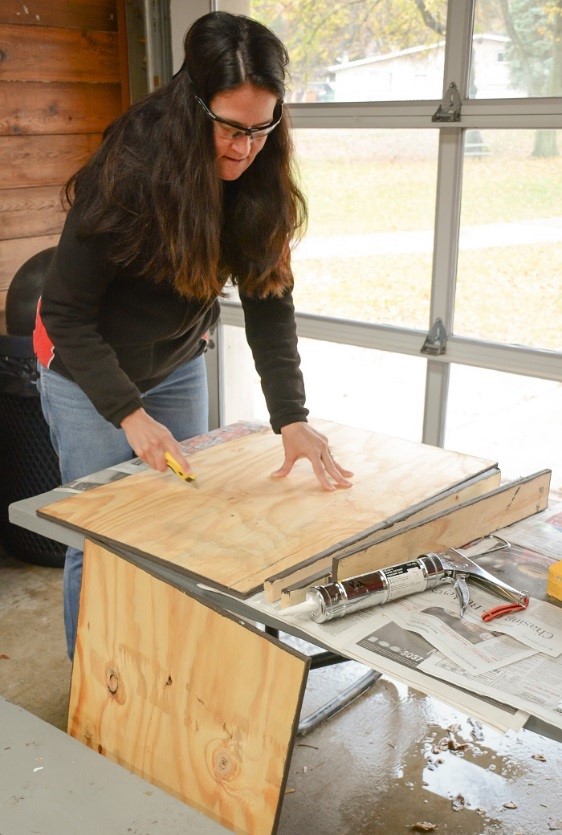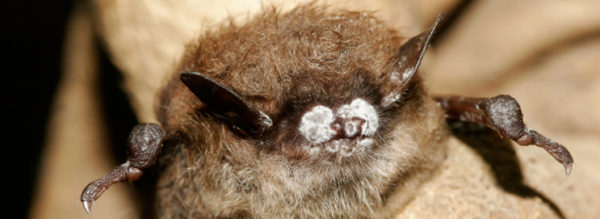
Building Bat Houses Builds a Better Life for Bats
Putting up bat houses this summer can help bats that survived white-nose syndrome raise their young, according to Wisconsin Department of Natural Resources Conservation Biologists.
White-nose syndrome poses a serious threat for Wisconsin bats
White-nose syndrome, named for the powdery white fuzz that can develop on hibernating bats’ noses, ears and wings after infection with the fungus Pseudogymnoascus destructans. This causes bats to awaken more often during hibernation, thus burning up critical stores of fat they need to survive winter.

White-nose syndrome was first documented in Wisconsin in April 2014 and since then has spread to more than 50 mines and caves in 20 of the 24 Wisconsin counties with known bat hibernacula or places where bats overwinter. Bat populations where white-nose syndrome has been present two or more years in their winter hibernacula have declined 30 to 80 percent. “Bats surviving white-nose syndrome need all the help they can get to raise their young and help rebuild populations,” said Heather Kaarakka, a Department of Natural Resources conservation biologist who works with Wisconsin’s bat populations.
Building and installing bat houses
Wisconsin’s little brown and big brown bats are the most likely species to take up residence in bat houses. A bat house can provide shelter for 100 to 300 little brown bats. When built and placed correctly, bat houses offer safe, warm habitat for maternity colonies, Kaarakka says. After the mother bats give birth to their young, the house provides shelter while mother bats leave the roost nightly to feed and while the pups remain in the roost until they are able to fly.
Properties where there are already bat roosts or places where bats go to sleep or rest during the day, are good candidates for bat houses. Providing a bat house can help get bats out of old homes, barns and other buildings while helping keep these beneficial insect-eating mammals around. State law prohibits disturbing bat roosts from June 1 through Aug. 15 to protect mothers and pups, but placing a bat house during this time period can help begin the process of excluding bats from buildings because it offers an alternative habitat.
Builders are encouraged to paint the bat house dark brown or black to help the house heat up and stay warm through the night. A warmer house enables a shorter gestation period and faster maturation of the pups, Kaarakka says.
Installing bat houses on sunny, south or east facing sites within one-quarter mile of lakes or rivers, where bats can drink water and find food at night, increases the chances the houses will be used. Bat houses should be mounted 10 to 15 feet in the air on a pole or a building and not trees, which provide too much shade and easy access to the bats from predators such as owls.
Finally, Kaarakka encourages patience in waiting for bats to take up residence in the new house. “If there is a colony within a mile or so, the bat house may get used within a couple of months, especially in the late summer and fall as juvenile bats are exploring and learning to forage,” she says. “If there is no established roost in the area, it can sometimes take several years for bats to find and inhabit the bat house.”
Click for a complete list of building supplies and detailed instructions.
To learn about other ways to help Wisconsin bats – visit the Wisconsin Bat Program
This article was adapted from a Wisconsin DNR press release
